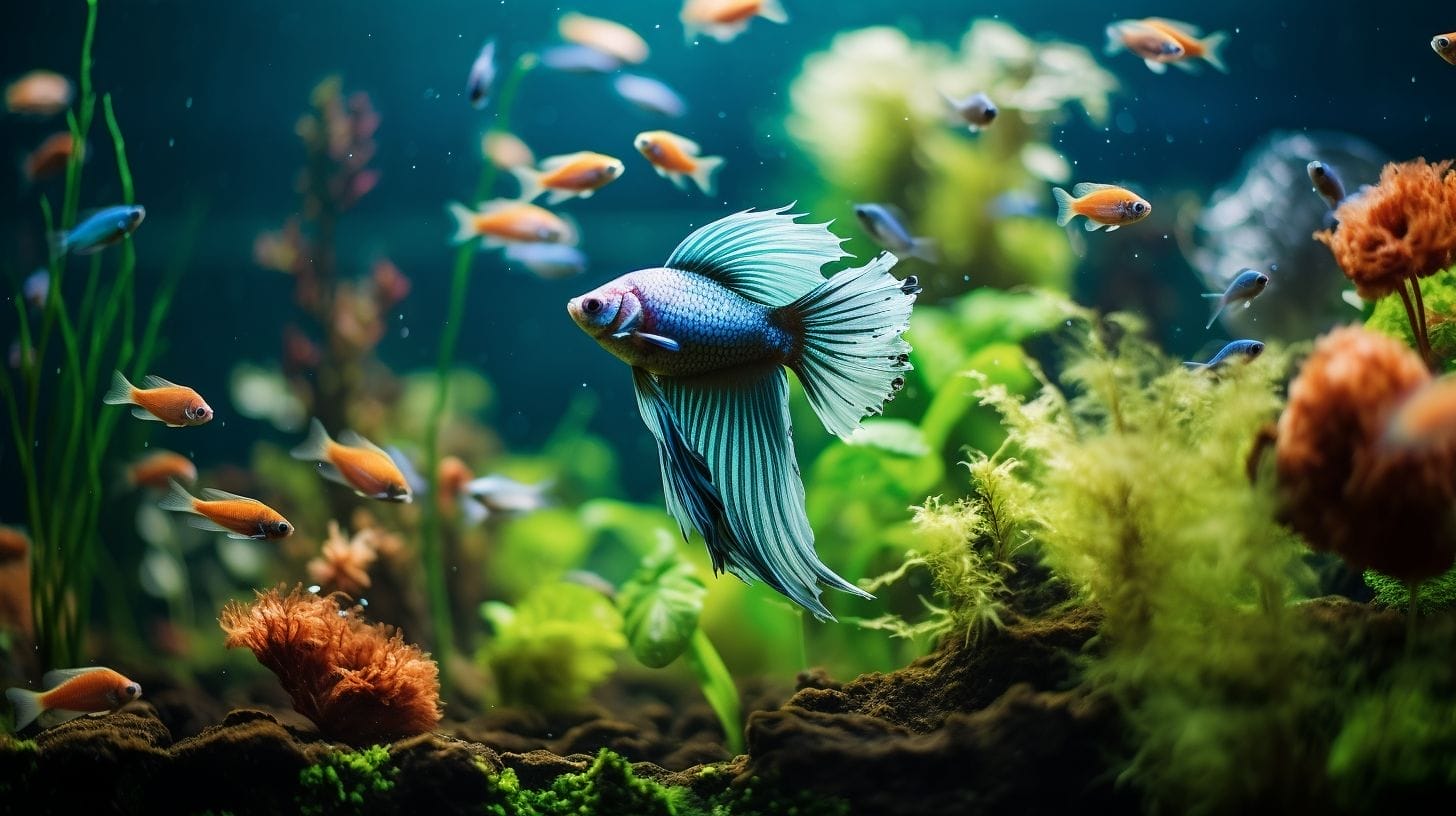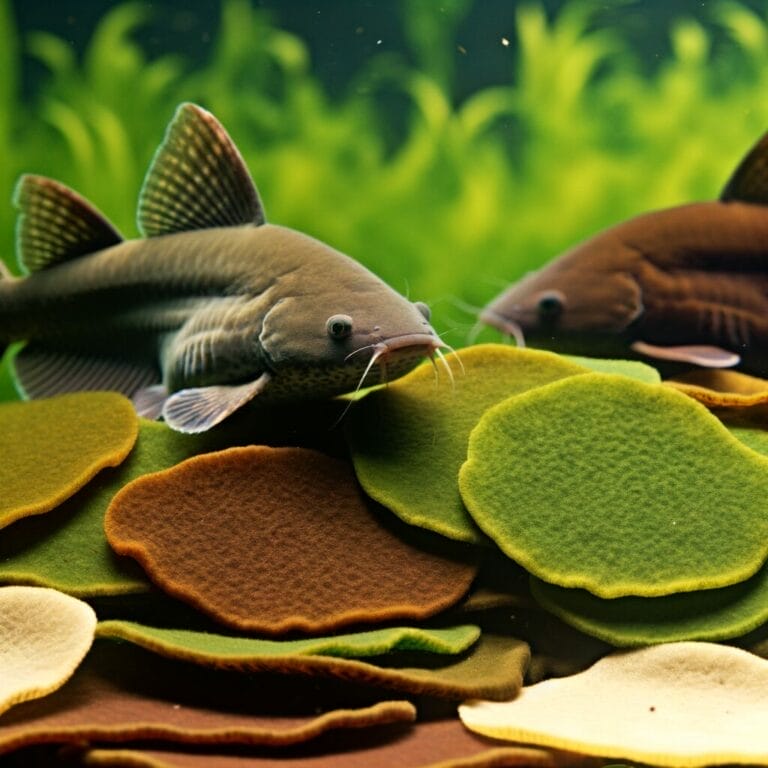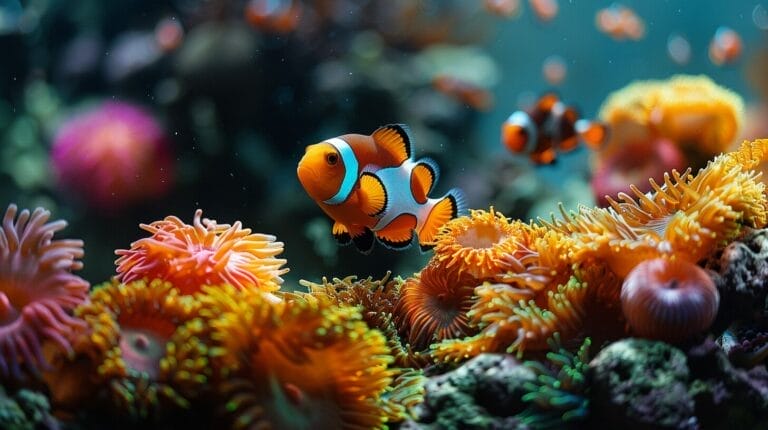How Many Betta Fish In A Tank: A Comprehensive Betta Fish Housing Guide
Betta fish, renowned for their breathtaking fins and captivating colors, have a knack for capturing the hearts of aquarists globally. However, beneath their tranquil exterior are intricate care requirements—particularly when housing many bettas in a single tank.
After spending over two decades studying marine biology and countless hours observing these elegant creatures, I’m here to shed light on how many betta fish in a tank can cohabit harmoniously
Dispelling the age-old myth that bettas can thrive in tiny bowls is essential—it’s not just outdated, it’s harmful. These tropical beauties need ample space to swim freely, establish territories, and live life to the fullest—a single male betta requires a minimum 5-gallon aquatic haven.
But there’s more to maintaining harmony among multiple bettas—a challenge I’m eager to share insights on, drawing from my wealth of hands-on aquarium experiences. Ready for some expert advice? Let’s dive in!
Key Takeaways
- Each male Betta requires its own 5-gallon tank due to their aggressive nature.
- Female bettas can coexist in a group provided the tank is spacious—20 gallons or more.
- Opt for peaceful creatures like snails and shrimp as tank mates for your Betta. Ensure adequate space for harmonious cohabitation.
- Maintain a clean tank and regularly check the water to ensure it’s safe for your bettas and their companions.
- Monitor the behavior of the fish, particularly when introducing new ones, to maintain a healthy and happy environment.
Understanding the Basics of Betta Fish and Their Natural Habitats

In the realm of Betta fish, understanding these vibrant beings and their native environments is crucial.
Their unique traits and original habitats significantly influence their care in our homes, affecting everything from tank volume to social dynamics within the aquatic environment we create for them.
Identifying the basic characteristics of bettas
Betta fish, also known as Siamese fighting fish, are small yet vibrant tropical fish characterized by their flowing fins and tails.
Their vibrant hues range from striking reds and blues to purples, making them a visually stunning addition to any aquarium.
Despite their fierce appearance, bettas require gentle care to stay happy and healthy. Understanding these flashy swimmers better equips us to create the perfect environment for them in our tanks.
Learning about their natural environments
Bettas originate from warm, shallow waters in locations like Thailand, where they’re accustomed to swimming in rice paddies, slow-moving streams, and deep ponds filled with plants.
Hence, a betta’s home should mimic these conditions, providing warm water and hiding places.
Female bettas prefer group living, provided they have sufficient space and hiding spots. When setting up their tank, add elements like pots or caves for them to retreat to when they desire solitude.
Incorporating live plants can also make your bettas feel at home by offering additional hiding spots and recreating the wild environments from which they originate.
Discovering betta fish lifespan and typical behaviors
Betta fish can live up to 3 years with proper care. These vibrant swimmers are territorial and may exhibit aggression towards others sharing their space. Therefore, it’s crucial to understand their behavior.
They’re known for their toughness, often engaging in fights with other fish or even their own reflections! Male bettas, in particular, are feisty around each other—it’s in their nature.
To keep your bettas content, provide ample room for movement and hiding spots for when they desire solitude. It’s also crucial to maintain clean water—bettas’ health depends on it.
The Importance of Tank Size for Betta Fish Health and Wellness
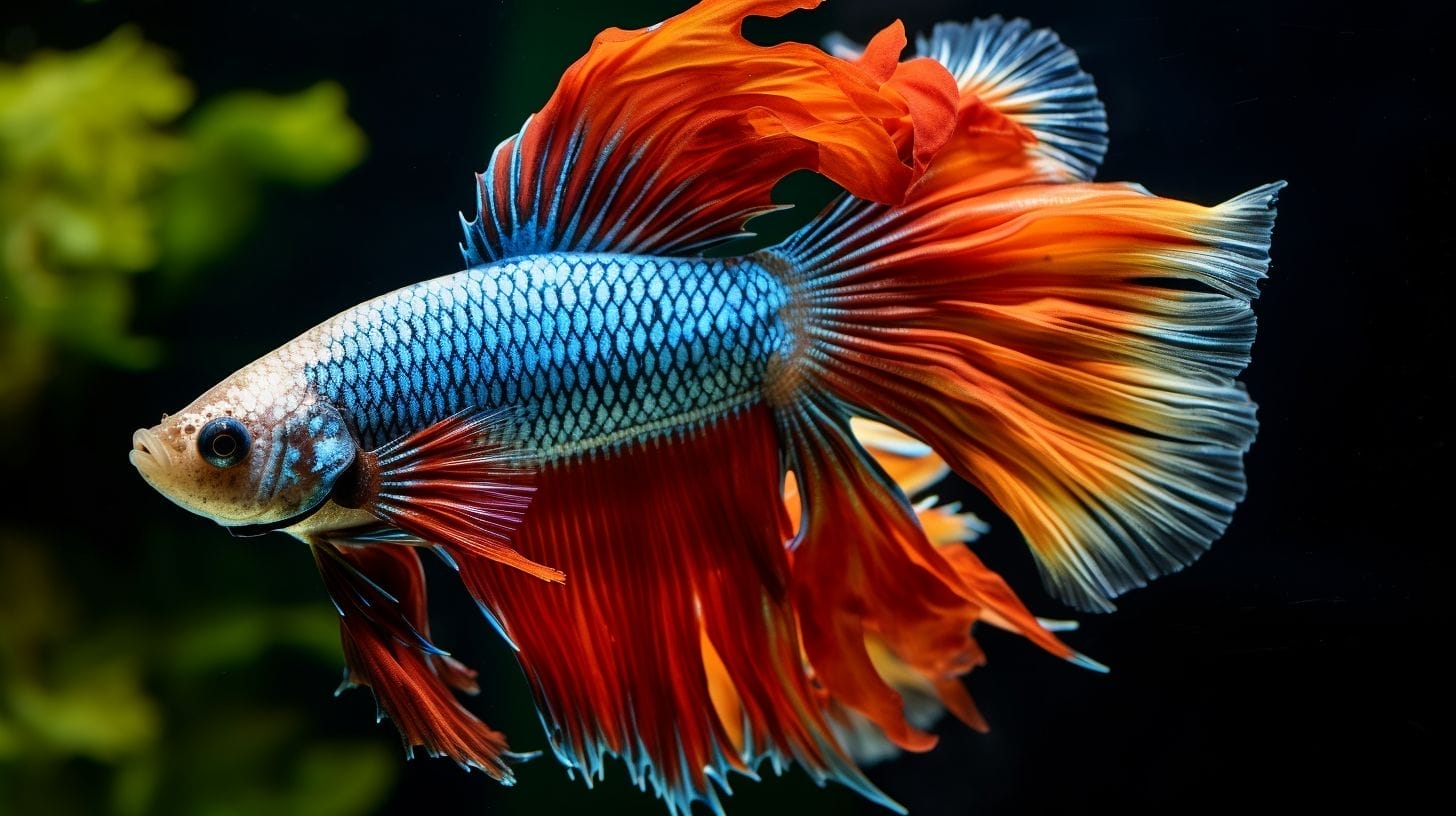
As an aquarist, I’ve learned that the well-being of betta fish is heavily dependent on their living environment. It’s not solely about aesthetics but about replicating aspects of their natural habitat that significantly impact their health and behavior.
The volume of water in your tank is more than just a number—it’s the foundation for creating an environment where these vibrant creatures can thrive.
How the tank size impacts the health of betta fish
Bettas require an adequate amount of space to maintain their health. A small tank can be detrimental, leading to stress sickness and potentially shortening their lifespan.
Much like humans in confined spaces, bettas also crave room to move around. In nature, they inhabit large areas like rice paddies and slow-moving streams, providing them plenty of swimming space.
A larger tank not only allows your Betta to move freely, promoting happiness, but it also contributes to cleaner water, which is vital for their health. Dirty water harboring harmful substances like ammonia and nitrates can make bettas sick.
Larger tanks dilute these harmful chemicals more efficiently than smaller ones.
Watch this video of how you can find Betta fishes in rice paddies:
The role of gallon capacity in betta fish survival
The gallon capacity of your tank is crucial for keeping a betta fish happy and healthy. These little swimmers require space to move, hide, and play and will not thrive in cramped conditions.
Consider this: if you were confined to a small room all day, you’d likely feel stressed. The same applies to bettas in tiny tanks; their stress levels can increase, leading to poor health.
For a single betta fish, a 5-gallon tank should be the minimum size to provide them with ample room to swim freely and enjoy their underwater life. For our finned friends to live a full and healthy life, bigger is undoubtedly better!
Minimum tank size requirements for a single betta
Here’s what you need to know about providing the ideal home for your Betta:
- A single betta fish requires at least a 5-gallon tank. This provides them with sufficient room to swim and explore.
- In their natural habitat, bettas have ample space. A small tank does not offer this freedom.
- Larger tanks contribute to cleaner water and facilitate better control over water temperature and quality.
- Bettas appreciate places to hide and rest. Make sure to include plants or decorations in the tank for this purpose.
- Avoid including anything sharp in the tank that can harm your Betta’s delicate fins.
- A filter is crucial in any tank volume. It assists in maintaining clean, circulating water.
- Heaters are also necessary since bettas thrive in warm water—between 76 and 81 degrees Fahrenheit.
Defining Betta Sorority and Male vs Female Behaviors in a Tank
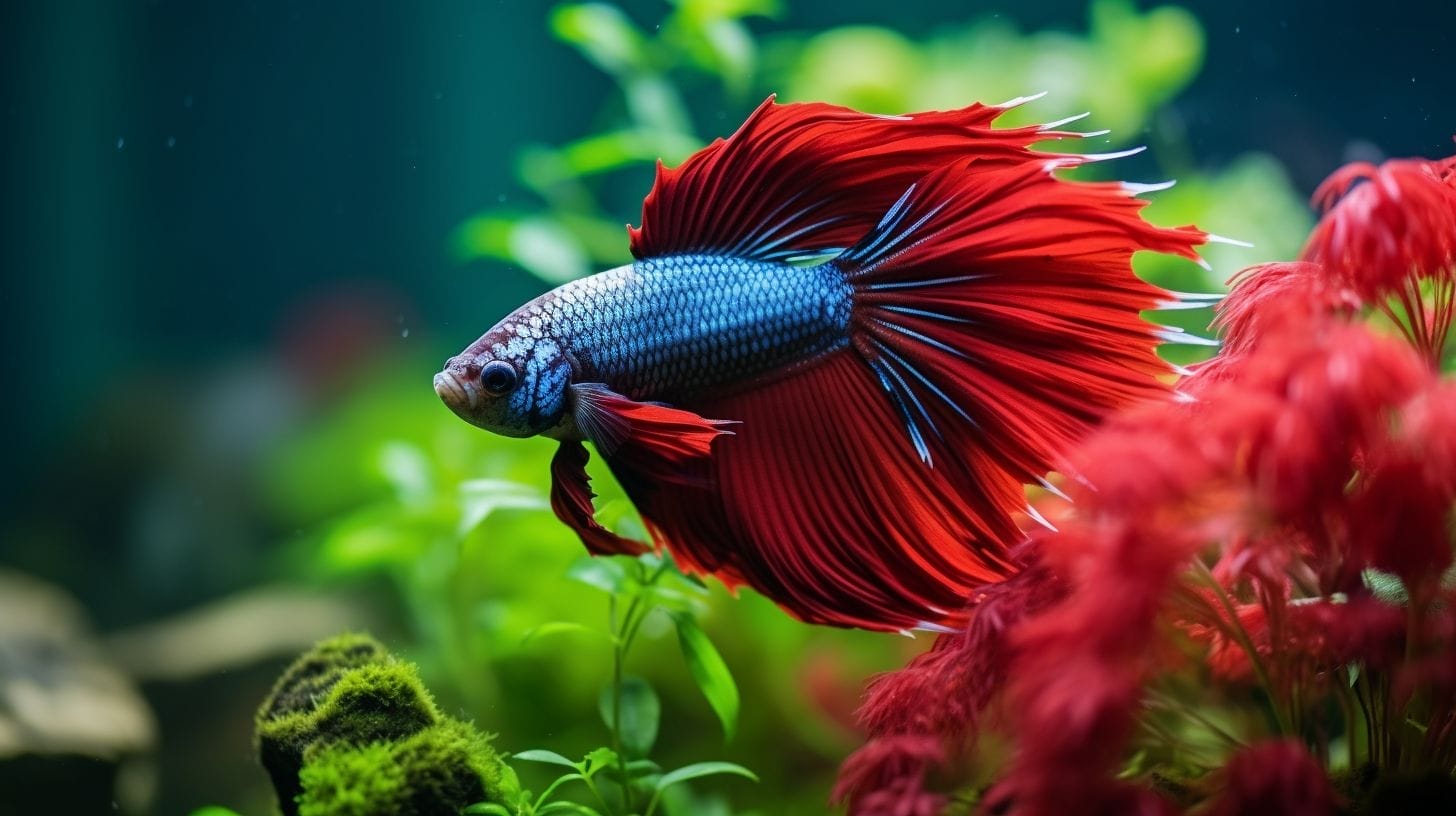
When exploring betta fish housing, one fascinating aspect is understanding the social dynamics of a betta sorority—a harmonious living arrangement for female bettas—and comparing that to the solitary nature and territorial tendencies of male bettas.
How these differences shape their experiences in the tank is quite intriguing.
What is a betta sorority, and how does it impact the number of fish in a tank?
A betta sorority refers to a group of female betta fish cohabiting in one tank. Unlike male bettas, females can share space if the conditions are right, allowing you to house multiple bettas in one betta sorority tank.
To maintain a peaceful environment, a minimum of 25 gallons of water is recommended for your Betta sorority. A larger space allows each Betta to claim her territory, reducing the likelihood of conflicts.
A group of females adds vibrancy to your tank but requires close monitoring due to their potential feistiness.
Providing plenty of hiding spots and plants can make a significant difference, essentially creating separate rooms within the tank, each offering a private nook for one female betta fish, especially when they need solitude.
Differences between male and female bettas behaviors
While a betta sorority involves housing several female bettas together, it’s important to note that male and female bettas exhibit different behaviors.
Male bettas are famously territorial, often behaving aggressively towards other males invading their space. This can lead to intense conflicts if they share the same tank, hence the recommendation to house only one male Betta per tank.
On the other hand, female bettas are generally less aggressive. Several female bettas can coexist in the same tank, provided there’s enough space and hiding places.
However, it’s crucial to observe their interactions when first introduced to each other. Minor chasing can occur, but typically, they settle down once they establish a hierarchy.
The myth about keeping two male bettas in one tank
It’s a common misconception that two male bettas can coexist in one tank. The reality is quite the contrary.
Male bettas are notorious for their aggression, especially towards other males. Housing two males together in the same tank often results in frequent fights due to their territorial nature.
To ensure your betta fish are content and healthy, each male should have his own separate living space.
Guidelines on the Number of Betta Fish You Can Keep per Tank Size
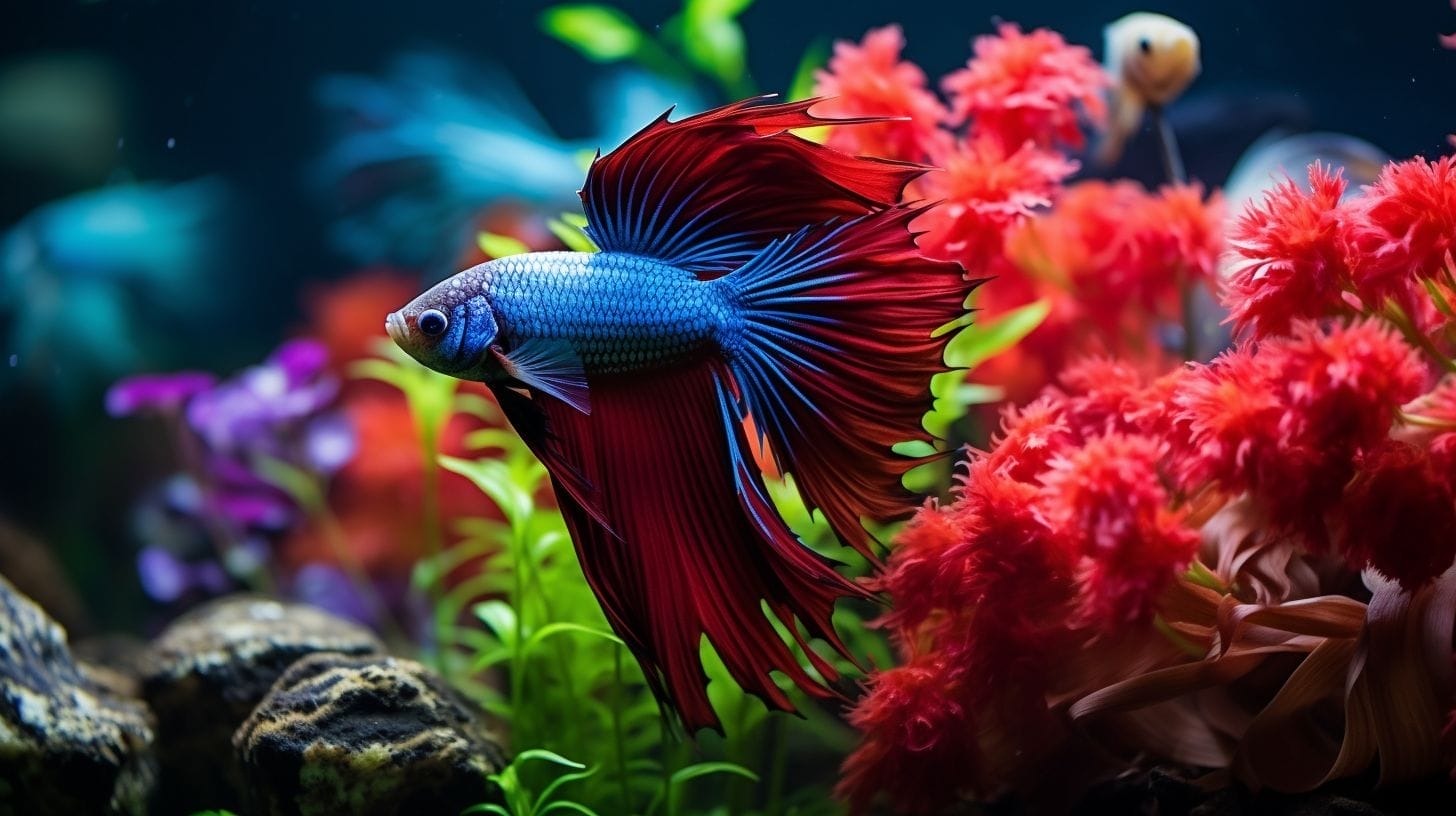
Understanding betta fish housing requires recognizing that tank size is not just a number—it’s vital for their well-being.
Learn how to determine the ideal number of bettas that can coexist harmoniously within your aquatic haven, whether you’re working with a cozy 10-gallon tank or a spacious 20-gallon underwater sanctuary.
The recommended number of bettas for a 10-gallon tank
A 10-gallon tank is ideal for a single male betta. Due to their aggressive nature, male bettas need ample space.
Housing more than one male Betta in a 10-gallon tank can lead to conflicts. However, when it comes to female bettas, a group can coexist in a tank larger than 10 gallons.
Providing enough room and keeping the tank clean and comfortable, with plenty of places to hide and rest, is crucial for your Betta’s well-being.
When considering adding new companions, opt for a larger tank and choose fish that get along well with your Betta.
Keeping more than one Betta in a 20-gallon tank
With a 20-gallon tank, you can create a beautiful betta sorority. Female bettas can live together peacefully in a tank of this size. For a harmonious environment, it’s best to house a group of at least 4-5 females to dissipate any potential aggression.
Ensure your tank is well-decorated with plants and caves where they can retreat when they need to. This arrangement allows each fish to feel like she has her own safe spot.
Remember to look for signs of aggression, such as chasing or nipping, and never house males together, as they need separate spaces to stay happy and healthy.
Precautions to consider when housing male and female betta fish together
Housing male and female bettas together requires careful consideration. These fish can display aggressive behavior, so ensuring they have plenty of space is crucial to preventing stress and fights.
Adding plants and hiding places provides each Betta with their own space and can prevent aggressive behavior.
Monitor your bettas closely if they share the same tank. Signs of aggression, such as chasing or nipping, may indicate that separation is necessary. For a peaceful tank, consider adding other types of calm fish that get along with bettas.
If conflicts occur, it’s wise to have an additional tank available for any injured or sick fish that need time alone to recover.
Accommodating Betta Tank Mates and Enhancing Fish Coexistence
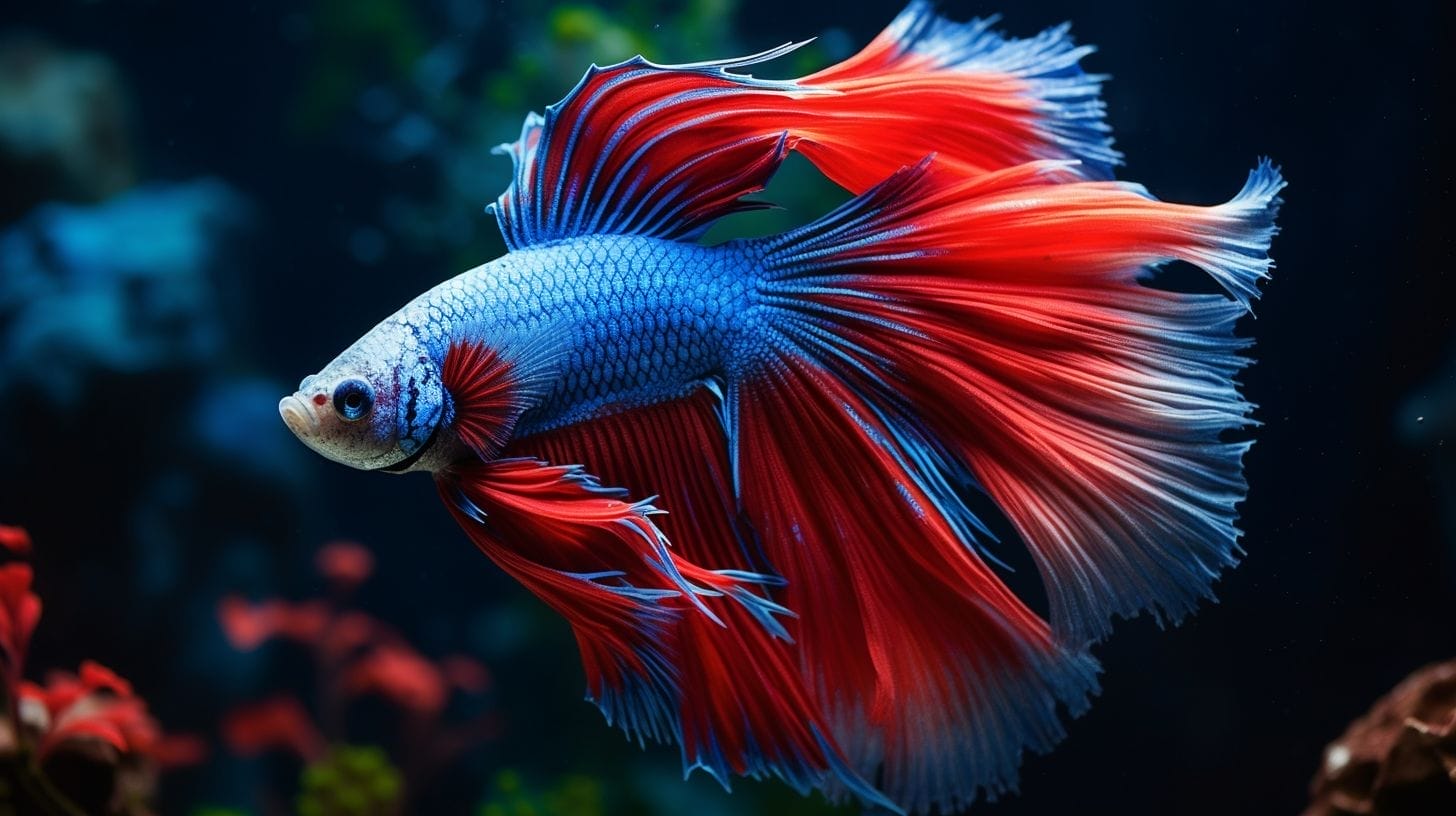
Creating a harmonious environment in a betta’s aquatic home goes beyond their species—it’s about building a thriving community tank.
Identifying the right companions for your bettas not only enriches their environment but allows you to observe a more dynamic aquatic ecosystem.
Suitable tank mates for bettas in mixed-species tanks
Certain fish species can coexist peacefully with bettas. Here are a few options:
- Guppies: Peaceful and colorful; just ensure they do not have large fins that bettas might mistake for other bettas.
- Cory Catfish: These bottom-dwellers coexist well with bettas, which usually swim at the top.
- Amano Shrimp: These creatures help maintain tank cleanliness by eating algae and are often left alone by bettas.
- Mystery Snails: Their slow movement and hard shell protect them from potential betta aggression.
- Neon Tetras: Their small size and quick movements allow them to evade bettas if chased.
How to introduce new tank mates to existing bettas
Introducing new tank mates to your Betta can be an exciting process. However, it needs to be done carefully to ensure the happiness and safety of all fish:
- Choose the right friends: Betta fish can be picky about their tank mates. Select peaceful creatures like ember tetras or harlequin rasboras that won’t cause conflict.
- Check the space: Confirm your tank is spacious enough for more fish. More room reduces the likelihood of fights.
- Set up hiding spots: Incorporate plants and decorations for each fish to have its territory within the tank.
- Keep an eye on the water: New fish can alter the water conditions in your tank. Regular testing ensures it remains safe for all inhabitants.
- Introduce slowly: Initially, place the new fish in a separate clear container inside the tank. This allows the fish to see each other without physical contact.
- Watch for signs: Look out for any chasing or nipping between your Betta and the new tank mates.
- Give them time: After a few hours, if all seems calm, you can release the new fish into the main part of the tank.
Safely managing betta fish in a densely populated tank.
Managing a densely populated betta tank requires careful attention. Here’s how you can ensure the happiness and health of your finned friends:
- Ensure the tank is spacious. A larger environment helps prevent fights.
- Add plenty of hiding spots using plants and decorations.
- Maintain clean water. Change approximately 30% of it every week and use a water conditioner.
- Regularly check the water conditions, monitoring for ammonia, nitrite, nitrate, and pH levels.
- Choose calm companions for your bettas. Opt for peaceful fish like guppies or neon tetras that won’t instigate trouble.
- Introduce new mates gradually. Allow them to acclimate to each other slowly.
- Observe your fish. Monitor their behavior and separate them if they engage in fights.
Conclusion
Caring for betta fish entails understanding their spatial needs. Remember, a single betta requires a minimum 5-gallon tank. Females can cohabit in a larger space of 20 gallons, while males need to live alone to prevent conflicts.
Adding peaceful companions like snails and certain fish species can make bettas happy, provided there’s sufficient room. Keeping the water clean and regularly checking its conditions are fundamental to maintaining a healthy environment for your Betta.
Frequently Asked Questions
Can I keep more than one betta fish in a tank?
Certainly, although it may present some difficulties along the way. You can house a single fish or create a betta sorority with only female bettas. Ensure your tank is large and contains plenty of hiding spots.
How big should my betta fish tank be?
For a single male betta fish, a smaller tank will suffice; a 5-gallon tank would be ideal. However, for a group of bettas to live together, aim for at least 10 gallons.
Is it okay to keep multiple male bettas together?
It is not advisable to house multiple male bettas in one tank because of their inherent aggressiveness.
What if I want to mix different types of fish with my Betta?
Ensure your tank is spacious and contains plenty of hiding places if you plan to house non-aggressive aquarium fish with your single male or female Betta in a larger 20-gallon tank or more.
How do I create the perfect tank size for a sorority of female bettas?
For a group of female bettas, aim for at least 20 gallons and set up the tank so the dominant female can establish her territory without overly harassing the others.
What else should I know about water changes and caring for my Betta’s home?
Regular water changes help keep your Betta healthy. Monitor for harmful substances like ammonia, chlorine, and chloramine, which can harm your aquatic pets.

